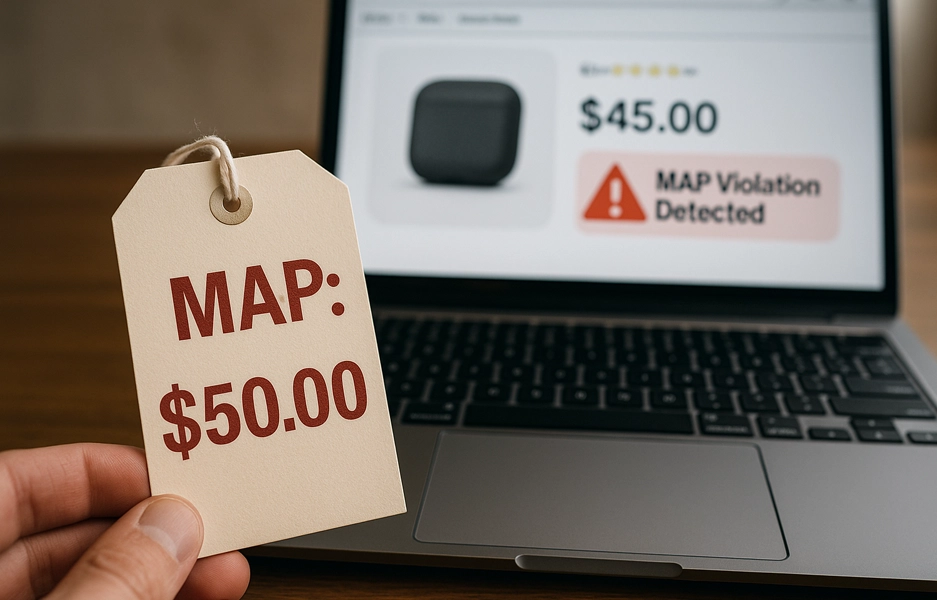Parallel imports, often referred to as grey market goods, are products diverted from their intended country of sale to an unauthorized market, typically to exploit price differences between regions. This practice, known as price arbitrage, allows sellers to buy goods at a lower cost in one country and sell them at a profit in another, bypassing the manufacturer’s authorized distribution channels.
This multi-billion-dollar phenomenon has been a persistent issue for decades, affecting industries worldwide. While parallel importing is generally not illegal, it often violates contractual agreements between manufacturers and distributors or retailers, which specify the countries where products are authorized to be sold. The result? A complex grey market that undermines brand control, pricing strategies, and supply chain integrity.

The Scale of the Problem
Parallel imports represent a significant challenge for brands and manufacturers. The global grey market thrives because of the sheer volume of goods involved and the financial incentives driving it. Products ranging from electronics and pharmaceuticals to luxury goods and consumer items are rerouted in huge quantities, often at steeply discounted prices intended for specific markets. This not only erodes profit margins but also creates confusion for consumers who may unknowingly purchase goods without proper warranties or support.
Types of Parallel Importers
Parallel importing isn’t a one-size-fits-all operation. Different players engage in this practice for various reasons. Here are the main types of parallel importers:
1. Intentional Diverters
Some distributors purchase products from manufacturers with the explicit goal of redirecting them to unauthorized markets. In one common tactic, goods are picked up “Ex Works” (EXW) at a port and shipped directly to the unauthorized country, never even reaching the intended destination. Alternatively, products may arrive in the authorized country but remain in a bonded warehouse—where no duties are paid—before being quietly rerouted when the opportunity arises.
2. Excess Inventory Clearers
Distributors stuck with surplus or end-of-lifecycle inventory may turn to the grey market to offload stock. Rather than taking a financial loss, they sell these goods to unauthorized markets, recouping costs and avoiding waste.
3. Opportunistic Sellers
Some distributors stumble into parallel importing when approached by grey marketers offering lucrative deals. Others capitalize on regional shortages—like those seen in Russia during the Ukraine war—diverting goods to meet demand and maximize profits.
The Legal Grey Area
Parallel imports occupy a murky legal space. While they’re not typically outright illegal, they breach the contractual terms set by manufacturers, creating friction in the supply chain. In the United States, for instance, U.S. Customs Service has a tool called the Lever Rule, which allows brands to block grey market imports under certain conditions. However, securing Lever Rule protection is a cumbersome process, requiring extensive documentation and proof of material differences between the authorized and grey market goods. For many companies, this makes it an impractical solution.
Why Parallel Imports Hurt
Given the challenges of legal enforcement, the most effective way to combat parallel imports is proactive supply chain management. Brands must identify and address the source of the problem—those diverting the goods in the first place. This could mean:
- Cutting Off Offenders: Terminate relationships with distributors or retailers caught diverting products.
- Penalizing Violations: Enforce strict contractual penalties to deter grey market activity.
- Tightening Oversight: Monitor inventory flows and implement tracking systems to spot irregularities early.
While these measures require investment and diligence, they offer a more reliable defense than hoping for customs interventions or legal victories.
Stopping Parallel Imports: A Supply Chain Solution
Of all grey market activities, parallel imports are often the most damaging. The sheer scale of diverted goods—imported in bulk at prices tailored to specific regions—floods unauthorized markets with cheap products. This undercuts authorized sellers and devalues the brand. Worse still, the entities selling these goods in unauthorized countries are often unaffiliated with the manufacturer, leaving brands with little legal recourse to hold them accountable.
Consumers, too, bear the brunt. They may end up with products lacking proper warranties, customer support, or even safety certifications, all while believing they’ve scored a legitimate deal.
Can New Sellers Win the Amazon Buy Box?
It’s tough, but not impossible. Amazon tends to favor sellers with a proven track record — solid metrics, positive reviews, and consistent fulfillment performance. While new sellers usually don’t win the Buy Box right away, with time, effort, and the right strategy, it’s definitely achievable.
Does Amazon Always Win the Buy Box?
Not always. While Amazon often has the edge — thanks to its pricing and logistics — it doesn’t automatically win the Buy Box. Third-party sellers who stay competitive on price, maintain high performance metrics, and offer fast shipping can absolutely win it, too.
Conclusion
Parallel imports may be a grey area in legality, but their impact on brands is black-and-white: lost revenue, diluted brand equity, and frustrated consumers. As a multi-billion-dollar global issue, it’s not going away anytime soon. For manufacturers, the key to tackling this challenge lies not in chasing down every grey market seller but in locking down the supply chain. Control the source, and you’ll control the problem.
Thank you for reading our post, “3 Reasons Why You Should Consult An Expert About Your MAP Policy Template.” We hope you found it helpful.
Protect Your Brand from Parallel Imports
Unauthorized sellers and diverted goods are eroding your margins and control.
Let Brand Alignment help.





